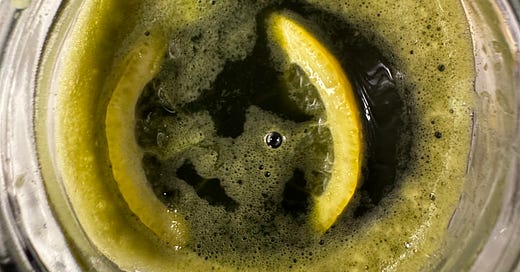Recipes/Techniques Included
Salted Lemon Peels
Sugar Macerated Salted Lemons
Lemon Powder
Lemon Syrup
Spiced Lemon Paste
Lemon Toasted Millet Shio Koji
Fermentation is a negotiation between acidity and enzyme, intention and transformation. It began with lemons, from an accumulation of rinds in a freezer. They were destined for dehydration. I thawed, salted, rinsed, cut them into eighths, and then macerated them with raw cane sugar. The goal was to preserve their integrity, manage salt levels, and draw out liquid through osmosis. The result was lemon with softened rinds, bright acidity, and a substantial amount of extracted syrup.
I wanted to preserve and transform them. Their flavor was tart, slightly salty, and aromatic. The salt had cleaned and re-structured the cells, then the sugar had pulled out moisture, concentrating the pulp and beginning a curing process. They could now be treated in multiple ways, each with a different outcome.
As the syrup accumulated and the softened rinds took on a candied quality, the idea for multiple fermentations emerged. They could become shio koji as encouraged by the saltiness of the syrup. They could become a multi-purpose paste. What were the constraints of pH, of salinity, of the substrate? My decision to employ koji reflected a deliberate engagement of, and negotiation with these tensions.
Preservation and fermentation do exist without koji: Aspergillus, Rhizopus, or Mucor. Protocols and techniques are about validating and re-validation, allowing for new inventions and ideas, often through serendipity in science and fermentation. Or, at least a general idea how to switch something out.
The range of techniques described goes from very simple to unique. Nothing that creates anything other than an edible, tasty thing to eat by itself, or with the staple or food stuff of the season, or what is accessible. That's the ultimate goal of both preservation and fermentation. As it always was. Use what is at hand.




